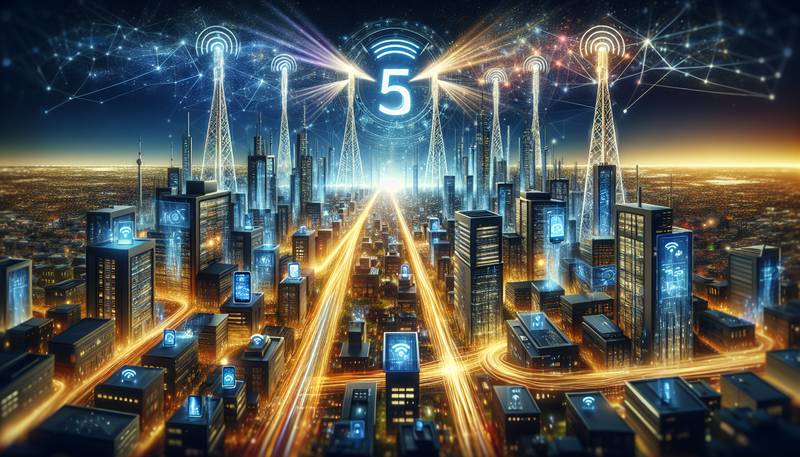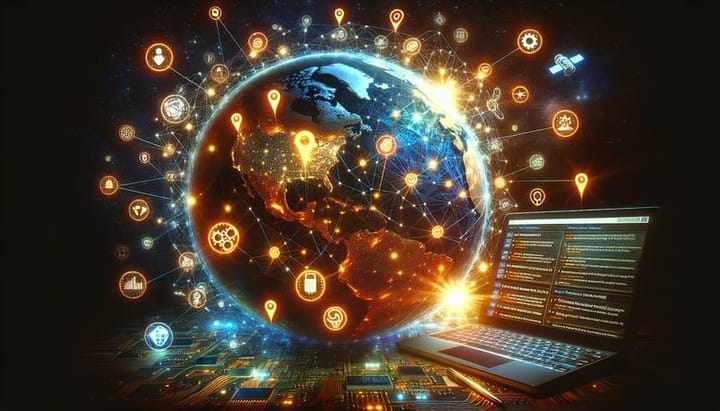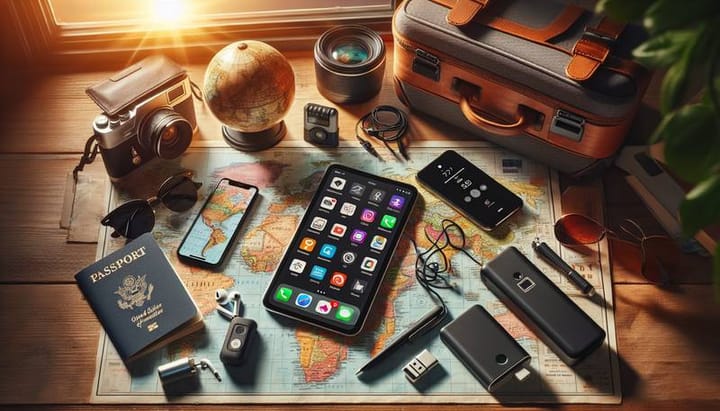The Impact of 5G: What You Need to Know

Welcome to the dawn of a new era in wireless technology! With the advent of 5G, we're not just stepping, but rather leaping into the future of connectivity. This isn't just an incremental upgrade from 4G; it's a monumental leap that promises to reshape industries, redefine our experiences, and rewire our digital ecosystem. In this guide, we'll unravel the layers of 5G to reveal the core of its impact, the breadth of its potential, and the weight of its challenges. Whether you're a gadget lover, a streaming binger, a gaming aficionado, or just someone curious about the future of internet connectivity, this guide will provide you with a comprehensive understanding of 5G and its transformative power. So strap in and prepare for an entertaining and informative tour of the fifth-generation technology that is about to change the world as we know it!
The Basics of 5G
Let's start with 5G 101. Fifth-generation wireless (5G) is the latest iteration of cellular technology, engineered to greatly increase the speed and responsiveness of wireless networks. With 5G, data transmitted over wireless broadband connections can travel at multigigabit speeds, with potential peak speeds as high as 20 gigabits per second (Gbps) by some estimates. These speeds surpass wireline network speeds and offer latency of 1 millisecond (ms) or lower, which is useful for applications that require real-time feedback. 5G will also increase the capacity of mobile networks, allowing more devices to be connected simultaneously.
But how does it work? Without getting too technical, 5G operates on three different spectrum bands. The low-band spectrum has a far reach and deep penetration but only slightly higher speeds than 4G. The mid-band spectrum is a sweet spot offering higher speeds and reasonable coverage. Then there's the high-band spectrum, also known as millimetre wave (mmWave). It provides the highest speed and capacity but has limited coverage and penetration capabilities. Together, these spectrums will support a wide range of use cases and create more efficient and reliable networks.
Faster Speeds, Lower Latency
It's all about speed and instantaneity. Imagine downloading your favourite high-definition movie in seconds not minutes, or playing a graphics-heavy game on your phone with zero lag. This is the kind of speed we're talking about; the kind of speed that can make current broadband connections feel like the sluggish days of dial-up. The potential for 5G's speed is seemingly limitless, pushing past the boundaries of what we currently expect from our mobile connectivity.
Latency, the time it takes for devices to communicate with each other over the network, is virtually nonexistent with 5G. Lower latency means that time-sensitive tasks become smoother and more reliable, opening the door to advances in everything from telemedicine to autonomous driving. The responsiveness of 5G could make remote surgery a regular occurrence, enable drones to be piloted remotely with precision, and allow for a fully interconnected smart city that optimizes traffic flow and energy use.
The IoT Revolution
Then there is the Internet of Things (IoT), which stands to be one of the biggest beneficiaries of 5G. IoT refers to the interconnectedness of physical devices, from kitchen appliances to streetlights to wearable health monitors, all communicating and exchanging data. 5G's capacity for supporting more devices within a network is a game-changer for the expansion of IoT. With its ability to handle vast data quantities, low latency, and increased connectivity, 5G will allow for an explosion of devices that can talk to each other and work together in smarter ways than ever before.
Consider smart homes, which can already do incredible things with current technology. With 5G, the sophistication of these systems can leap forward. High-speed, reliable connections mean that smart thermostats can work in perfect tandem with ambient sensors, smart blinds, and weather data, creating the most efficient environmental control systems possible. On the industrial side, factories equipped with 5G will see their machines, sensors, and workers connected in a seamless network, creating unparalleled levels of production efficiency and workplace safety.
Challenges and Controversies
While the promises of 5G are sky-high, so are the hurdles it must overcome. One of the biggest concerns is coverage - while high-band 5G offers breathtaking speed, its range is limited, and its signals can be blocked by walls and other structures. Building a 5G network will require a massive infrastructure overhaul, including installing a large number of small cells - miniature base stations that relay information - particularly in densely populated areas where demand is highest. There are also wider concerns about the environmental impact and cost of this rollout.
Public health and safety concerns have also been raised over the years, with some questioning the potential effects of increased radiofrequency radiation. It's worth noting, however, that to date, substantial scientific research has not conclusively linked 5G (or previous generations of wireless technology) to health issues. There are efforts ongoing around the globe to continue monitoring and studying these effects to ensure public safety.
Security is another significant concern. With increasingly more devices connected and communicating with each other, the potential for data breaches and other security threats increases. Steps are being taken to address these issues, but there's a constant race between security development and the ingenuity of cybercriminals.
The Future of 5G
Given all the opportunities and challenges, what's next for 5G? As research and development continue to push the limits of this technology, the future appears bright. Companies are innovating at breakneck speeds, paving the way for more sophisticated applications of 5G. There are already discussions about 6G, anticipated to arrive around 2030, which will build upon the foundation that 5G is laying right now.
We'll likely see a focus on expanding 5G networks to provide comprehensive coverage, including rural and underserved areas. In parallel, we can expect a surge in the development of devices that can fully utilize 5G's capabilities, including new smartphones, IoT gadgets, and perhaps products that we haven't even imagined yet. There's talk of smart cities, connected cars that are capable of communicating with road infrastructure for safer transportation, and an even smarter, more automated industry.
Conclusion
As we stand on the cusp of the 5G era, it's important to approach this new technology with both enthusiasm and a critical eye. The benefits that 5G promises to deliver could reshape our world, forging pathways to innovations unfathomable in a pre-5G age. It is set to alter our digital experiences with its blistering speeds and near-instantaneous connectivity, rendering our current digital interactions as primitive as the early days of the internet in comparison.
Yet, as with any major technological advancement, we must ensure proper scrutiny and examination of the challenges and potential risks. Only with a sustained and responsible approach can we harness the true power of 5G, mitigate its risks, and create a connected future that benefits all of humanity. As we continue to explore the vast frontiers of what's possible with 5G, let's take a moment to appreciate the boundless potential ahead. This is no longer the stuff of sci-fi fantasies—it's the reality of our tomorrow, and it's about to get excitingly faster.


